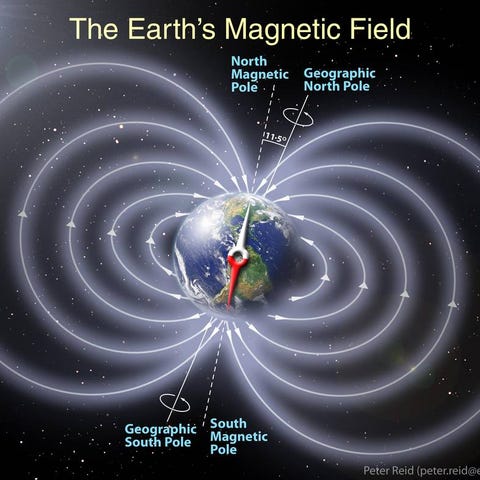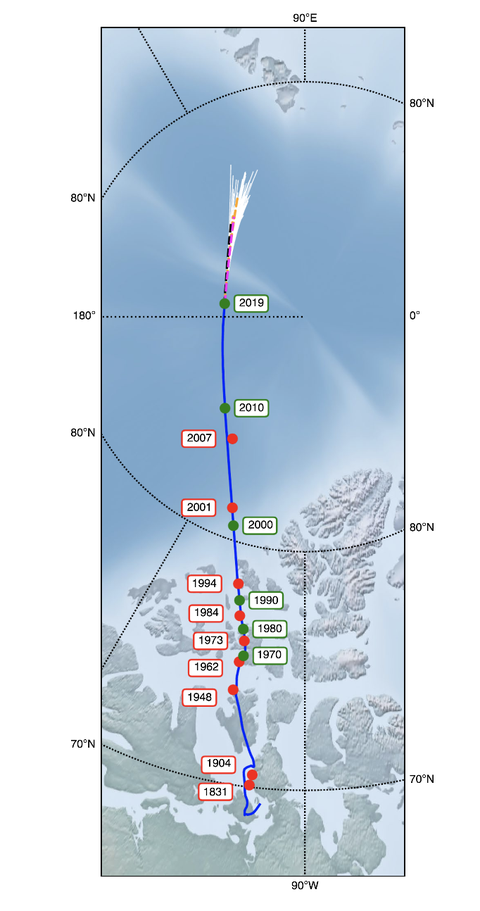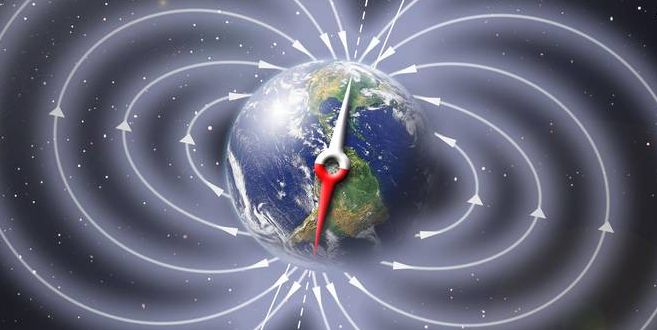
- Earth’s magnetic north pole has shifted away from Canada and closer to Siberia at a rapid pace in recent years.
- Researchers believe two massive blobs on molten iron in Earth’s outer core may have spurred the runaway pole.
- There’s no telling where it will end up.
The magnetic north pole just isn’t where it used to be.
Ever since James Clark Ross first identified it on the Boothia Peninsula in Canada’s Nunavut territory in 1831, scientists have been carefully measuring its location ever since. But in recent years, it’s been inching closer and closer to Siberia at a surprisingly rapid pace.
Now, researchers from U.K. and Denmark say they’ve uncovered the reason for this mysterious movement: Two writhing lobes of magnetic force are duking it out near Earth’s core.
“The wandering of Earth’s north magnetic pole, the location where the magnetic field points vertically downwards, has long been a topic of scientific fascination,” the researchers write in their paper, which appears in the May 5 issue of Nature Geoscience.
Earth’s magnetic field is generated by molten iron in its outer core. The flow of this liquid iron can influence the location of the planet’s magnetic poles. While poles have drifted and even swapped places numerous times over the course of Earth’s long history, what’s different about this recent shift is how quickly it’s happening. From 1999 to 2005, Earth’s magnetic north pole went from shifting 9 miles at most each year to as much as 37 miles in a year.
These scientists pored over 20 years of satellite data from the European Space Administration’s Swarm satellite mission and discovered that “…over the last two decades the position of the north magnetic pole has been largely determined by two large-scale lobes of negative magnetic flux on the core–mantle boundary under Canada and Siberia,” according to the study.

The magnetic north pole has shifted over time since scientists first identified its location in 1831. LIVERMORE ET AL. NATURE GEOSCIENCE (2020)
Between 1970 and 1999, the flow of molten, magnetic material in Earth’s outer core changed. Because of these changes, the researchers say, the magnetic blob lurking beneath Canada slowly elongated in the early aughts, weakening the corresponding magnetic intensity on Earth’s surface.
Eventually, the blob of molten material beneath Canada split in two and the stronger one slowly shifted toward the blob beneath Siberia. This spurred the magnetic north pole to slip closer and closer to Siberia, where the magnetic intensity was stronger.
In 2017, the magnetic north pole fell within 240 miles of the geographic north pole. The movement has been so rapid that the British Geological Survey and U.S. National Geophysical Data Center, which update the World’s Magnetic Model, had to accelerate their process in order to keep up.



CERN… their accelerator … entertained the thought it could be a behemoth electro magnet ..